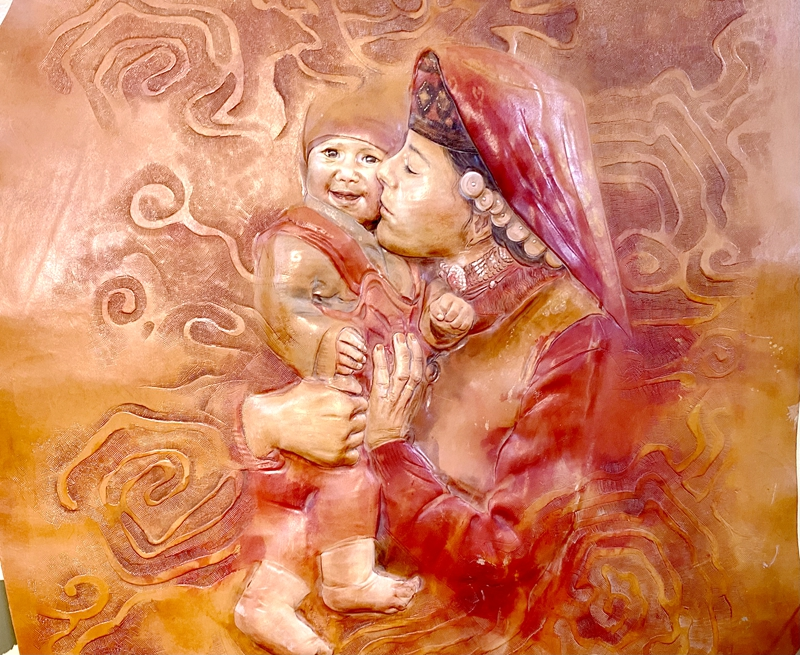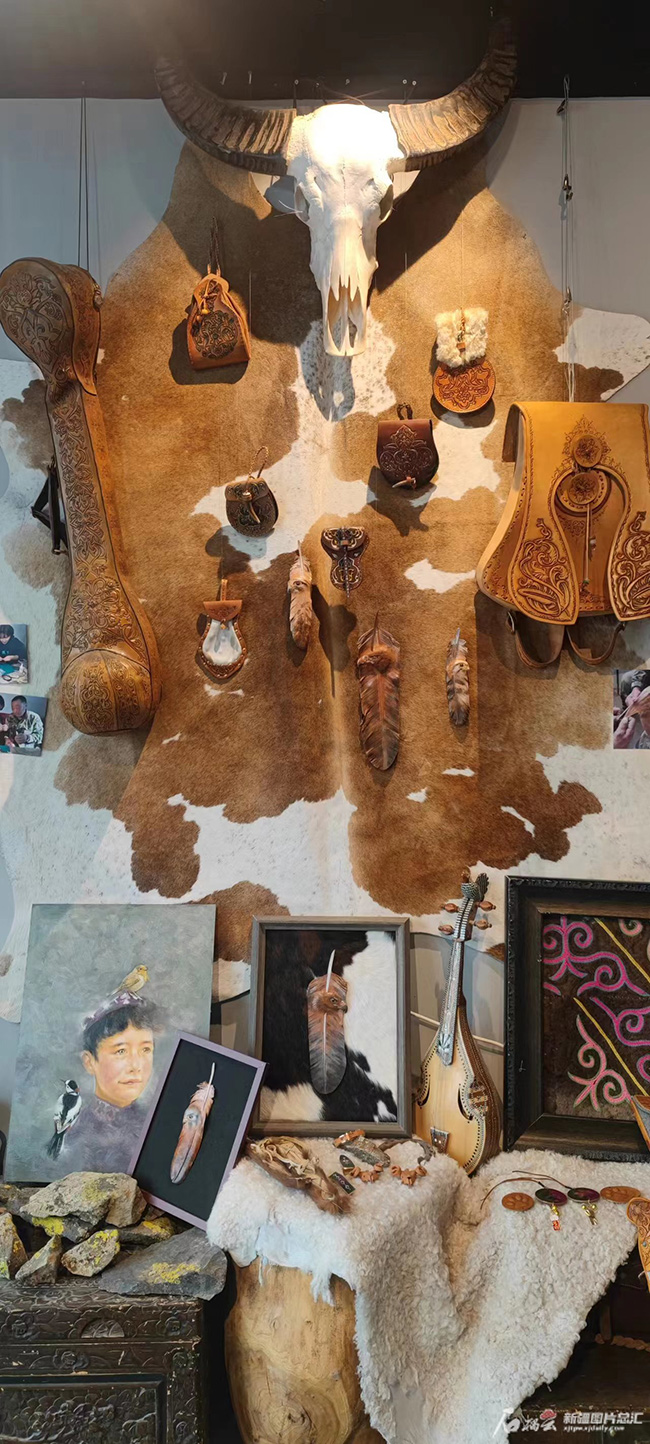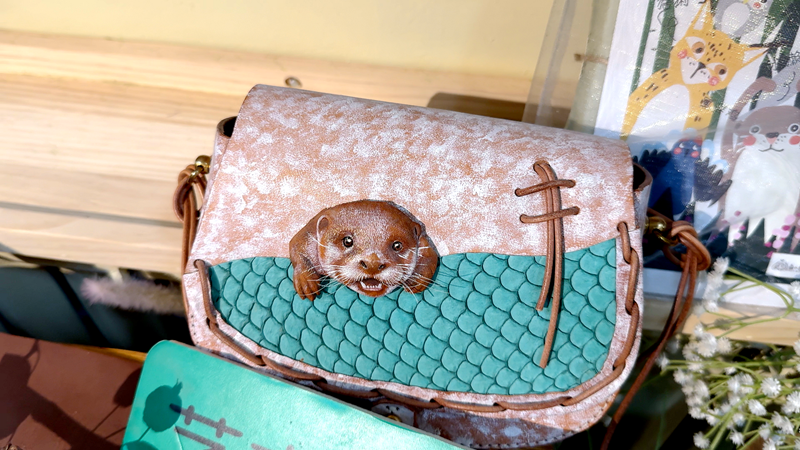On the vast and legendary land of northwest China's Xinjiang Uygur Autonomous Region, where countless dazzling cultural treasures have been born, leather carving in Xinjiang stands out as a uniquely captivating gem. Using leather as its canvas and carving tools as its brush, it weaves its own beautiful legend through the long river of time, sharing an inseparable bond with the nomadic people of the region.

Photo shows an artwork of Meng Lulu, a leather carving artisan and municipal-level intangible cultural heritage inheritor. She has devoted more than a decade to preserving this traditional craft. (Photo provided by Meng Lulu)
The origins of leather carving in Xinjiang can be traced back to ancient times when nomadic people, living a life of following water and pasture, forged an inseparable bond with leather. Characterized by durability, resilience, and malleability, leather became their material of choice for crafting everyday items, from simple pouches and bags to intricately made saddles and boots. Each piece was a testament to their wisdom and diligence.
As time passed, they began to seek more than just utility in their leather goods. They started carving intricate patterns into the material, infusing it with artistic spirit. These designs vividly depicted nature and reflected their aspirations for a better life. Over centuries of development, this craft evolved into the distinctive style and masterful technique we see today, in which every engraved line tells a story, and every pattern embodies the devotion of the artisan.

Photo shows an artwork of Meng Lulu, a leather carving artisan and municipal-level intangible cultural heritage inheritor. She has devoted more than a decade to preserving this traditional craft. (Photo by Tianshannet-Xinjiang Daily/Wang Xinhong)
Every step in making leather carvings reflects artisans' dedication and hard work, with each detail showcasing their meticulous pursuit of perfection. The process begins with the selection of premium leather, where the toughness of cowhide or the suppleness of sheepskin offers diverse possibilities. Through soaking, dehairing, and tanning, the leather becomes pliable yet resilient, creating the ideal canvas for carving.
The soul of the craft lies in the design phase. Drawing inspiration from a deep appreciation for life and keen observation, artisans translate their visions into intricate patterns. Some designs are bold and minimalist, while others are ornate and elaborate, each filled with cultural significance.
The heart of the process is the carving itself. With precision blades in hand, artisans work much like painters wielding brushes, varying the depth and rhythm of their cuts. Every line flows effortlessly, and every motif springs to life. At this stage, leather transforms from a simple material into an emotional work.
After dyeing, polishing, and finishing, the final piece emerges: a radiant work of art, with warm hues and refined textures that exude timeless charm. This craft honors tradition while embracing new vitality.

Photo shows an artwork of Meng Lulu, a leather carving artisan and municipal-level intangible cultural heritage inheritor. She has devoted more than a decade to preserving this traditional craft. (Photo provided by Meng Lulu)
Leather carving in Xinjiang artfully blends cultural elements from the region's diverse ethnic groups, creating a uniquely captivating aesthetic. These works showcase a vibrant fusion of styles, each reflecting distinct cultural identities while harmoniously influencing one another. Together, they form a rich and multifaceted artistic tradition.
In recent years, leather carvings from Xinjiang have gained prominence at major art exhibitions, with heritage-inspired creations like carved leather paintings, bags, and pendants growing in popularity. These pieces strike a perfect balance between exquisite craftsmanship and contemporary appeal, blending timeless elegance with modern sensibility. Today, this art form continues to captivate audiences, proudly carrying forward its legacy while carving out new milestones.
(Source: CCTV.com, CRI Online, Xinjiang Daily)









